Before even hopping on a motorcycle, it’s a smart decision to ride about the mechanics of the machine and familiarize yourself with key concepts. Having an idea in your head is going to come in handy when you’re faced with common beginner problems or later on when you’re on the road.
That’s how you really get a handle on the motorcycle. Let’s get started.
Motorcycle Basic Controls
Most motorcycles have the same controls; but you should always check the owner’s manual since the locations and shapes of some features will vary between makes and models.
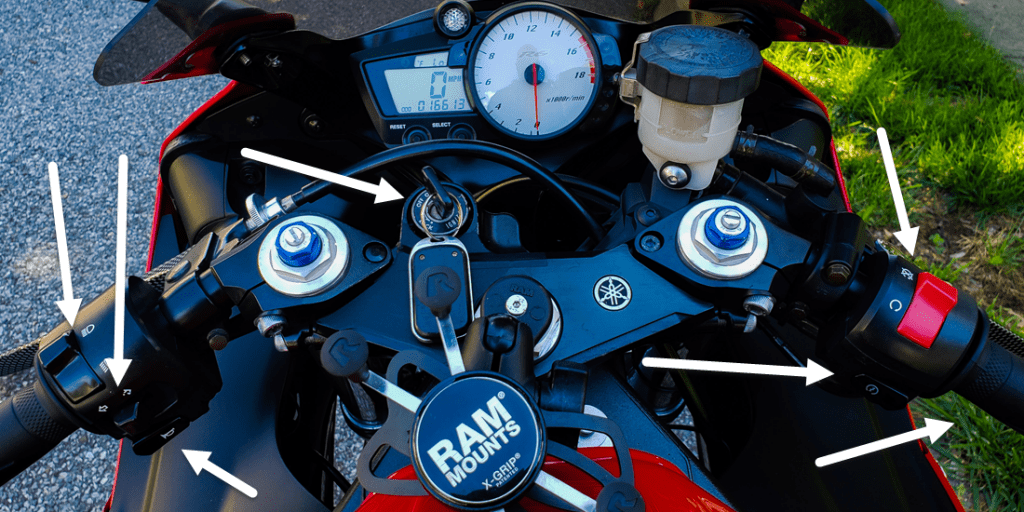
Motorcycle basic parts:
Handlebars
Right side:
- Electric start button – usually yellow or white.
- Engine cut-off switch – above the electric start button. Usually red.
- Above the right throttle is the front brake lever.
Left side:
- Horn
- Indicators (blinkers)
- Choke
- Headlight dip switch (high beams/low)
- Clutch lever.
Between the handlebars, you find the ignition key. Ahead of the handlebars, you will also see the speedometer, odometer, and the tachometer.
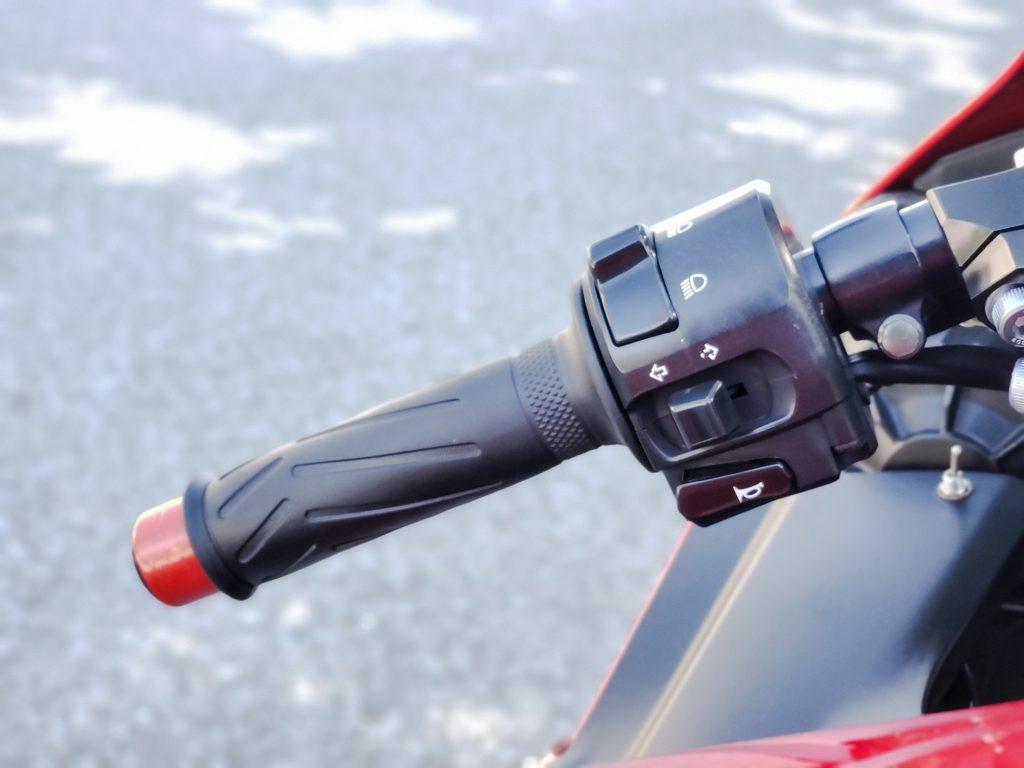
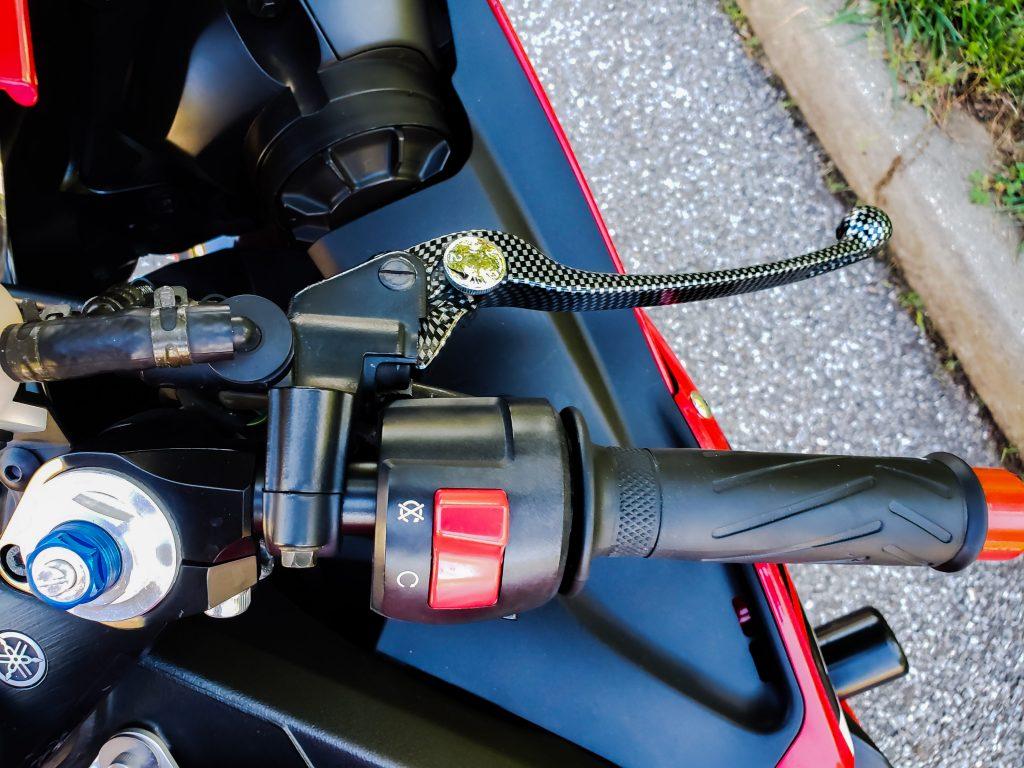
Older Styles and Off-Road Bikes
Here’s some special considerations if you are on an older model or have an off-road bike:
Fuel petcock – these are usually attached to the left near the carburetor. You can lean down to switch the gas tank when the fuel is getting low and you need to get to the gas station ASAP.
Kick starter – off-road bikes have kick starters more commonly than street bikes. The kick starter works when you push down on the lever, turning the engine crank and causing the pistons to put pressure against the spark plug. Fuel ignites to start the engine.
What To Check Before Your Ride Every Time
Professional schools throughout the country use the acronym T-CLOCs to help you remember what you should check before heading on your bike. These checks should be done at least once a year, depending on how often you are riding your bike. If you ride every single day, you will have to use T-CLOCs much more often.
- T – Tires
- C – (Main) Controls
- L – Lights & other controls
- O – Oil & other fluids
- C – Chassis
- S – Stands
Tires
Check the air pressure and look at the condition of the tires. Are they worn down? Cracking? What is the condition of the spokes? Do you note any air leakage?
Next, look at the rims, bearings, seals, and casts. Does each brake work as it should? Does the bike fight you when turning or slowing down?
Controls
The main controls include the handlebars, cables, hoses, levels, pedals, and throttle. Make sure the condition of the hoses is good and that everything is properly lubricated. The bars should be straight, and the throttle should move without resistance. Ensure the hoses aren’t cut or leaking. Any bulges, chafing, cracks or fraying of control cables needs to be repaired.
Lights & Other Controls
This includes the battery, wiring, tail and signal lights, switches, blinkers, headlight, and reflectors. Is everything illuminating? Do the blinkers flash right? Is fraying or kinks in the wiring? Are the beams strong enough in the dark?
Oil & Other Fluids
Check the gaskets and seals for any leaks. Ensure the oil level is good, along with other fluid levels. Check for sediment in the coolant reservoir.
Chassis
The chassis is made up of the frame, suspension, chains, belts, and fasteners. Nothing should rattle. Nothing should be frayed, cracking, peeling, or chipping. Ensure that everything is tight and that there is tension in the belts and chains.
Stands
Check for cracks or bends in the stands. Springs should hold their position without looseness.

Basic Mechanics of a Motorcycle
Being that a motorcycle rides on two wheels, it is designed to lean to either side. Through balance and input from the ride, the motorcycle maintains an upright position. Many beginners are afraid that the bike is going to fall over if they lean too far, but that’s not the case. Through the forces of physics, such as friction, momentum, and gravity, it’s nearly impossible for a bike that’s going to straight to fall over.
Engine
Another reason the motorcycle stays upright is the force of the pistons in the engine. These pistons move up and down, creating a force that helps the moving bike maintain it’s upward position.
Tires
The tires of motorcycles are designed to be rounded, ensuring that as the bike rounds a corner, the same surface area of the tire remains on the ground.
Chassis
For the beginner, all you need to know about the chassis is how to sit properly. When positioned properly on the bike, your wrists, knees, and back will be comfortable. You should also be able to engage your core and thigh muscles when using your body to maneuver.
Clutch
Most bikes are manual transmission. The clutch keeps the bike moving but also controls the speed by using friction. Clutches are usually bathed in the same oiled the engine uses, so if you ride the clutch for a while, you won’t cause damage. However, some bikes are different, so refer to the owner’s manual.
Wrapping It Up
For the new rider, your focus should be memorizing where the controls are and what certain parts of the bike do. By learning the general location, you can drive much more safely (and not while staring at the handlebars).
Remember, the everything takes practice. In the same way you learned to ride a bicycle, you need some patience with riding a motorcycle. With that, you’re ready to begin!
Liked this article? Want more beginner’s tips? Subscribe to my YouTube channel to get notifications about the latest videos and never miss out.
You Might also like
-
What Is the Average Cost of Motorcycle Insurance?
Motorcycles are fun, and have become a bit of an American icon representing free spirits, independence and a fun personality. Who hasn’t, at one time, wanted one, or at least to try riding one?
Well, like with any vehicle, you’re going to have to be trained to ride it, and you’re going to need insurance, as with anything on the road. Insurance is a pain, of course. It’s one of those things you shell out hundreds of dollars a year for, and hope to powers above that you never wind up needing once you have it.
It’s necessary. When you’re on the road traveling at speeds of over sixty miles per hour, accidents can and will eventually happen. Humans make mistakes, and some are, to put it frankly, idiots who just drive or ride carelessly. Insurance protects you from said idiots.
Insurance is a necessary evil, so it’s not free. Before investing in your motorcycle, you should do your due diligence regarding what upkeep of your bike is going to cost you. This includes maintenance, plates, tags, your license and, most importantly of all, said insurance.So, how expensive is motorcycle insurance? There’s no clear-cut answer to that, because different companies will vary, and more importantly, factors about yourself will directly, linearly impact price in every situation.
Let’s take some time to talk about these. If you see yourself described in any of these with prices you find painful, it may not be time for a motorcycle yet, or some other luxury may have to be given up.
What’s the Difference?
You’re thinking, you have a car, you know what car insurance rates are like, is there honestly a difference between cars and bikes in this regard? And if so, why?
To answer your first question, yes, there’s a significant difference in all regards between cars and bikes, from obtaining the license, to maintaining it, all the way up to insurance. It’s a horse of a very different color.
As for why? Well, all vehicles are inherently, mostly equally dangerous. How they’re dangerous is a big one. Vehicles can be dangerous to their passengers, of course, and often are. Their bigger danger is inflicting that damage on another unsuspecting driver, pedestrian, or other thing they may collide with.
A motorcycle is more dangerous to its rider(s). Hitting anything stationary like walls, polls, buildings or trees in a car is something you stand a decent chance of surviving, as the giant metal box around you absorbs the shock. Doing so on a motorcycle isn’t so pretty.
You could also fall off one of them doing 60, or be hit by one of the idiots we mentioned earlier whom drive negligently. When a four wheel vehicle hits a motorcycle, it usually does damage the car, though often fairly superficially. The motorcycle and its rider(s) enjoy no such luck. Riding a motorcycle requires far more vigilant operation due to this risk, the dangers of larger vehicles, and a plague of drivers who don’t check for motorcycles.Check for motorcycles, America.
Insurance Pricing
Like we said, due to a lot of variables, there’s no way to predict with one hundred percent certainty what your price would be, even with a lot of criteria, as these prices tend to be calculated at the time by an agent, due to the impact of variables changing from time to time.
Thus, the pricing below is an average, or generality. They’re good enough to ballpark whether or not you have the budget to ride a motorcycle legally.
Cruiser or Touring Motorcycle
- 25-60 yo, Good Driving Record, Liability Only – This going to be the least expensive scenario, as liability is the minimal legal coverage possible, just as with home or car insurance. It’s not hard to qualify for this insurance if you have a clean or at least good driving record. It may be possible to get it cheaper through your car insurance provider, if you’re in good standing with them as a customer. Est. Price: $100-$500/year
- 25-60 yo, Good Driving Record, Full Coverage – Chances are, you’ll want to protect what you love, and that means additional coverage for repairs, replacements, theft and other such concerns, not just covering you legally in an accident. This makes the price go up a good bit, but for this particular customer bracket, less than you might expect. This too may be cheaper through your existing auto insurance provider. You may also cheapen it further via installing approved anti-theft devices, purchasing approved safety gear, and so on. Est. Price: $400-$800/year
- 25-60 yo, Bad Driving Record, Full Coverage – A bad record can really haunt you with insurance. Not only can it be hard to get liability (due to having a record of being one), but the price of the full coverage will be considerably higher. We can’t really even give you a reliable estimate here, because it all depends on which provider you approach, what kind of bad driving record it is that you have, and what kind of mood the agent is in when they quote the price. Suffice it to say, it will be very expensive, possibly unmanageably so, and there aren’t really any lifehacks to make it cheaper. Et. Price: Impossible to guess, but tremendously high!
Crotch Rocket Sports Motorcycle
- 16-24 yo, Good Driving Record, Full Coverage – A 16-year-old probably shouldn’t be on a motorcycle, especially not a crotch rocket of all things. At that age, if motorcycles are something they want to pursue as a hobby or way of life, they should be learning fundamentals on dirt bikes. However, in some states, it is legal under guardianship, and at 18, anyone can legally drive anything if they earn the license to do so. Inexperience (which for motorcycles often takes liability only off the table) raises prices quite a bit, and full coverage is itself quite expensive. Parents might be able to get prices lower if policies give them some of the responsibility, thus lowering the premiums a little, but really, this is just going to be expensive, no matter how you slice it. Est. Price: $900-$1200/year
Are you a long-time rider just seeing if you can find a better price for your motorcycle insurance? Are you someone who’s planning to get into biking? Did these prices make you rethink how interested you were? I’m curious to know, so subscribe to me on YouTube, and let me know somewhere in the comments if these prices are obscene, about what you expected, or quite a bit lower than you feared. Then stick around, if you still want to ride, I’ve got some great content to get you started with one of America’s great hobbies!
-
How to Find the Best Sportbike Salvage Yard Near You: Breathe New Life into Your Ride
For passionate sportbike riders, keeping their machines running smoothly and looking sharp is a constant pursuit. But the sting of repair costs can sometimes dampen the thrill of the ride. That’s where sportbike salvage yards come in, offering a treasure trove of used parts at a fraction of the price of new ones.
However, navigating the world of salvage yards can be daunting, especially for first-timers. This comprehensive guide will equip you with the knowledge and strategies to locate the best sportbike salvage yard near you and score the perfect parts for your motorcycle.
Key Takeaways:
- Sportbike salvage yards offer cost-effective, environmentally friendly options for finding used parts for your motorcycle.
- Consider factors like inventory, reputation, distance, and services offered when choosing a salvage yard.
- Utilize online directories, search engines, local communities, and word-of-mouth recommendations to find suitable yards.
- Prepare thoroughly before visiting, including calling ahead, gathering information, dressing appropriately, and potentially bringing tools.
- Inspect parts carefully, negotiate prices respectfully, and prioritize safety while navigating the salvage yard.
Comparison Table: New vs. Used Sportbike Parts
Feature New Parts Used Parts (Sportbike Salvage Yard) Cost Significantly higher Significantly lower Availability Readily available for most models Wider variety, potentially including hard-to-find parts for older models Environmental Impact Higher due to resource extraction and manufacturing Lower due to part reuse Quality Guaranteed brand new and undamaged May show signs of wear and tear, requiring careful inspection Warranty Typically covered by manufacturer warranty May or may not be offered by the salvage yard Why Choose a Sportbike Salvage Yard?
Why Choose a Sportbike Salvage Yard?
Here are some compelling reasons to consider a sportbike salvage yard for your repair needs:
- Cost-Effectiveness: Used parts cost significantly less than new ones, making them ideal for budget-conscious riders.
- Part Availability: Salvage yards often stock a wide variety of parts, including hard-to-find components for older models.
- Environmental Friendliness: Reusing existing parts reduces the demand for new materials and minimizes environmental impact.
- Project Potential: Salvage yards can be a goldmine for enthusiasts working on restoration projects or customizing their bikes.
Finding the Right Salvage Yard: Factors to Consider
Before venturing out, consider these factors to narrow down your search and find the best sportbike salvage yard for your needs:
- Inventory: Does the yard specialize in sportbikes, or do they offer parts for various motorcycle types? Knowing their focus helps ensure they have the specific parts you need.
- Reputation: Research online reviews and testimonials from other riders to gauge the yard’s reputation for quality parts, fair pricing, and customer service.
- Distance: Consider the travel distance and weigh it against the potential savings and availability of parts.
- Services Offered: Does the yard offer additional services like part removal, installation assistance, or even delivery? These can be valuable perks.
Tools and Techniques for Your Search:
- Online Directories: Utilize online directories dedicated to locating salvage yards in your area.
- Search Engines: Leverage search engines like Google, using relevant keywords like “sportbike salvage yard near me” or “used sportbike parts + [your city/state]”.
- Local Forums and Communities: Engage with online communities or forums frequented by sportbike riders in your area. They often share recommendations and insights about local salvage yards.
- Word-of-Mouth: Don’t underestimate the power of personal recommendations. Ask fellow riders, mechanics, or motorcycle shops for their suggestions.
Visiting the Salvage Yard: Tips for Success
Once you’ve identified a promising sportbike salvage yard, here are some tips for a successful visit:
- Call Ahead: Contact the yard beforehand to confirm their operating hours, inquire about specific parts availability, and ask if they have a pull-your-own policy (where you remove the parts yourself) or if they offer removal assistance.
- Gather Information: Prepare a list of the parts you need, including model-specific details, and take pictures of your bike for reference if needed.
- Dress for the Occasion: Wear sturdy shoes and closed-toe footwear, as salvage yards can be dusty and have uneven surfaces.
- Bring Tools (optional): If the yard allows pull-your-own options, bring basic tools like wrenches and screwdrivers to remove the parts you need.
- Negotiate: While not always applicable, some salvage yards are open to negotiation, especially for larger purchases. Be polite and respectful when making an offer.
- Inspect the Parts Thoroughly: Before purchasing any part, meticulously inspect it for any damage, wear and tear, or missing components. Ensure it aligns with your needs and expectations.
Beyond the Parts: Additional Resources and Considerations
Finding the perfect sportbike salvage yard is just the first step. Remember these additional points:
- Safety First: Always prioritize safety when navigating a salvage yard. Wear protective gear and be cautious around machinery and potential hazards.
- Ask Questions: Don’t hesitate to ask the yard staff for assistance or clarification regarding parts, compatibility, or their return policy.
- Warranty Options: Explore whether the yard offers any warranties on the parts you purchase, providing peace of mind in case of unforeseen issues.
6 FAQs: Finding the Perfect Parts at a Sportbike Salvage Yard
-
Do I need to be a mechanic to navigate a sportbike salvage yard?
- While familiarity with motorcycles is helpful, it’s not mandatory. Many salvage yards have staff available to assist and answer questions.
-
What happens if the part I buy is damaged?
- Most salvage yards have a return policy, but always inquire about specific details and timelines before purchasing.
-
Can I negotiate prices at a sportbike salvage yard?
- While not always possible, some yards are open to negotiation, especially for larger purchases. Be polite and respectful when making an offer.
-
What safety precautions should I take when visiting a sportbike salvage yard?
- Wear closed-toe shoes, be mindful of uneven surfaces, and avoid touching any machinery or electrical equipment.
-
How can I ensure the compatibility of a used part with my specific motorcycle model?
- Consult your owner’s manual, research online forums, or seek assistance from the salvage yard staff to confirm compatibility.
-
What are some alternative options if I can’t find the part I need at a salvage yard?
- Online marketplaces and dealerships specializing in used motorcycle parts can be explored as alternative options.
By following these tips and utilizing the resources available, you can confidently navigate the world of sportbike salvage yards and find the perfect parts to breathe new life into your beloved machine, all while saving money and potentially reducing your environmental footprint. Remember, a little research and preparation can go a long way in ensuring a successful and rewarding experience.
-
Safety First: Essential Gear for Sportbike Riding
Sportbike riding is a thrilling and exhilarating experience, but it can also be dangerous if proper safety precautions are not taken. One of the most important steps you can take to protect yourself while riding is to wear the right gear. Whether you’re a seasoned rider or just starting out, it’s essential to have the right equipment to keep you safe on the road.
Riding a sportbike is a thrilling experience, but it is also important to prioritize safety. Wearing the right gear can help protect you in the event of a crash and keep you comfortable on long rides. In this article, we will explore the essential items that every sportbike rider should have.
Download RunThaCity’s Cheatsheet for Essential Gear for Sportbike Riding
Protect Your Most Valuable Asset with a DOT or Snell Certified Helmet
When it comes to riding a sportbike, the helmet is the most crucial piece of gear you can wear. It protects the most valuable part of your body, your head and neck. It is essential to choose a helmet that is DOT or Snell certified, as these have undergone rigorous testing to meet strict safety standards. A good helmet should fit snugly and comfortably, without being too tight or too loose. Make sure to try on several different brands and models to find the best fit for your head shape.
A good helmet should also have adequate ventilation to keep your head cool and dry, as well as an interior lining that is comfortable and moisture-wicking. Some helmets come with removable and washable liners, which can be a great feature for keeping your helmet fresh and clean. The helmet should also have a secure chin strap that keeps the helmet in place in the event of a crash.
When choosing a helmet, consider your riding style, as well as the weather conditions you will be riding in. If you do a lot of highway riding, a full-face helmet is a good choice, as it provides the most protection for your face and chin. If you do a lot of off-road riding, an open-face or modular helmet may be a better option, as it provides better ventilation and a wider field of view.
In conclusion, the helmet is the most important piece of gear you can wear while riding a sportbike. It is essential to choose a DOT or Snell certified helmet that fits well and provides adequate protection for your head and neck. Invest in a high-quality helmet, as it could save your life in the event of a crash.
Protect Your Body with the Right Motorcycle Jacket
A motorcycle jacket is a crucial piece of gear for sportbike riding. It serves not only as a barrier against wind and rain, but also as a layer of protection in the event of a crash. When choosing a motorcycle jacket, look for one made of abrasion-resistant material, such as leather or kevlar. This type of material will provide better protection in the event of a slide or impact.
Some motorcycle jackets come equipped with armor in the elbows, shoulders, and back. This extra layer of protection can help reduce the risk of injury in a crash. When shopping for a motorcycle jacket, look for one with CE-certified armor, as this type of armor has been tested to meet strict safety standards.
In addition to protection, a motorcycle jacket should also be comfortable to wear. Look for a jacket with adjustable straps and zippers, as well as a lining that will keep you warm on cooler days and cool on hot days. When trying on a jacket, make sure it fits well and allows for a full range of motion.
By investing in a high-quality motorcycle jacket, riders can feel confident and protected while riding their sportbike.
Protect Your Hands with Abrasion-Resistant Gloves
When it comes to riding a sportbike, gloves are more than just a comfort item – they are essential for safety. In addition to protecting your hands from wind, rain, and other elements, gloves can help protect your hands in the event of a crash. Abrasion-resistant materials, such as leather or heavy-duty fabrics, provide the best protection against road rash and other injuries.
When choosing gloves, it’s important to look for gloves with reinforced palms. This extra layer of protection helps to prevent injuries to your hands, as well as reducing the risk of cuts and bruises in the event of a crash. Make sure the gloves fit snugly, but are not too tight, as you want to ensure they do not restrict your ability to grip the handlebars or shift gears.
Ultimately, investing in a good pair of motorcycle gloves can make a big difference in terms of your safety and comfort on the road. So, make sure to choose gloves that meet your specific needs, whether you are looking for additional protection, extra comfort, or improved grip.
Keep Your Feet Safe with Motorcycle Boots
Riding a sportbike can be dangerous, especially if you don’t have the proper gear to protect yourself. Your feet and ankles are especially vulnerable in the event of a crash, making motorcycle boots an essential piece of gear for any rider.
When choosing motorcycle boots, look for a pair that is made of abrasion-resistant material. This will help protect your feet from road rash in the event of a crash. Additionally, look for boots that have reinforced toes and heels. These extra layers of protection can help reduce the risk of injury in the event of an impact.
Another important factor to consider when choosing motorcycle boots is fit. Make sure the boots fit snugly and don’t move around on your feet while you ride. This will help you maintain proper control of your bike, especially in the event of a sudden maneuver.
In addition to providing protection, motorcycle boots can also offer added comfort and support. Look for boots with a comfortable and supportive insole, and choose a pair that is water-resistant if you plan on riding in inclement weather.
Motorcycle boots are a crucial piece of gear for any sportbike rider. By investing in a high-quality pair of abrasion-resistant boots with reinforced toes and heels, you can help protect your feet and ankles while enjoying your ride.
Protect Your Lower Half with Motorcycle Pants
When it comes to motorcycle gear, many riders focus on the upper half of their body, but it’s just as important to protect the lower half as well. Motorcycle pants are an essential piece of gear that should be made of abrasion-resistant material to protect your legs in the event of a crash. The material should be strong enough to resist tearing and provide a barrier against the road in the event of an accident.
When choosing motorcycle pants, look for pants with reinforced knees and hips. These areas are vulnerable in the event of a crash, so extra protection is essential. Many pants also feature adjustable straps and zippers to provide a secure and comfortable fit.
In addition to safety, motorcycle pants should also be comfortable to wear for extended periods of time. Look for pants that are made of breathable material and provide a good range of motion for riding. Consider the climate in your area when choosing pants and look for options that are designed to keep you cool in hot weather or warm in cold weather.
Motorcycle pants are an essential piece of gear that should not be overlooked. Protect your legs and ensure your comfort by investing in a good pair of motorcycle pants.
Eye Protection
Eye protection is an essential aspect of sportbike riding that should not be overlooked. When riding at high speeds, debris from the road can easily fly up and cause injury to your eyes. This is why investing in a good pair of motorcycle glasses or a full-face helmet with a visor is important. The glasses or visor should have the capability to shield your eyes from wind, rain, and other elements that can cause discomfort and distraction while riding. Additionally, it is important to choose glasses or a visor that provides a clear and unobstructed view while riding.
In the event of a crash, a full-face helmet with a visor provides added protection for your face and eyes. The visor will protect your face from impacts, as well as prevent debris from entering your helmet. On the other hand, motorcycle glasses can be removed and replaced quickly and easily, making them a convenient option for riders who frequently switch between open-face and full-face helmets.
Eye protection is an essential component of sportbike riding gear. It helps keep you safe from the elements, debris from the road, and other potential hazards while riding. Invest in a good pair of motorcycle glasses or a full-face helmet with a visor, and ensure that you have the proper eye protection to enjoy a safe and comfortable ride.
Conclusion
In conclusion, having the right gear while riding a sportbike is not only crucial for your safety but also enhances your overall riding experience. Wearing the right gear protects you from the elements, including wind, rain, and road debris, and also helps prevent injury in case of a crash. A DOT or Snell-certified helmet, abrasion-resistant jacket, gloves, boots, pants, and proper eye protection are all important pieces of gear that every sportbike rider should have. Don’t compromise on safety and invest in high-quality gear that will give you peace of mind and allow you to fully enjoy your ride. Remember, when it comes to riding a sportbike, safety should always come first.


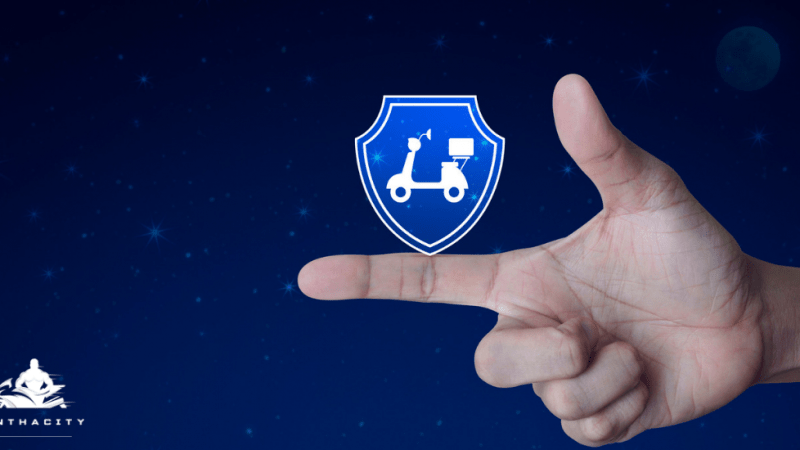
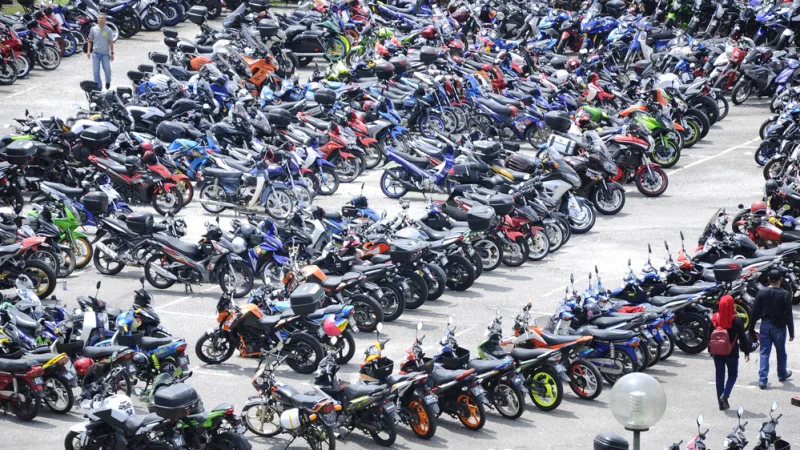
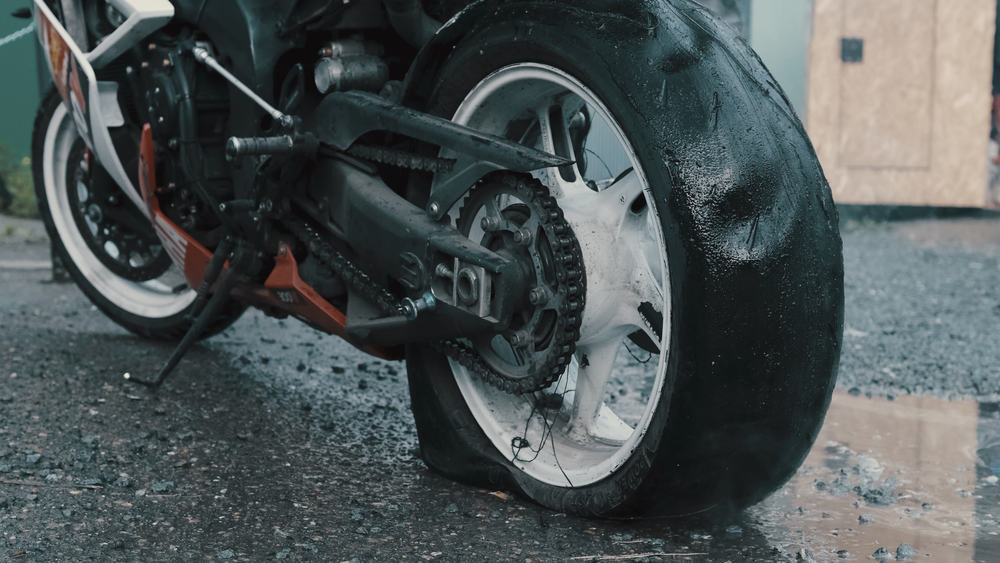

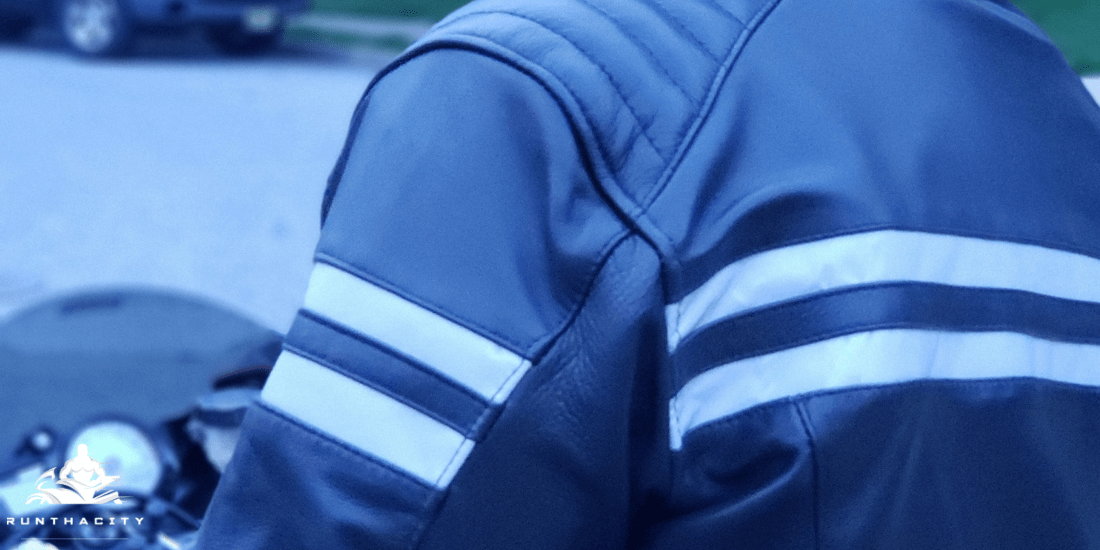





2 comments on Motorcycle Basics: Before You Start Riding